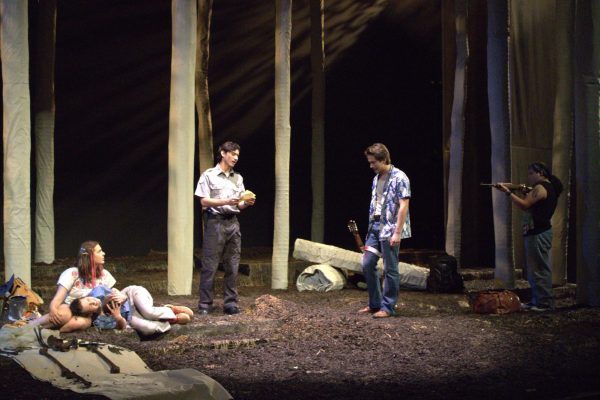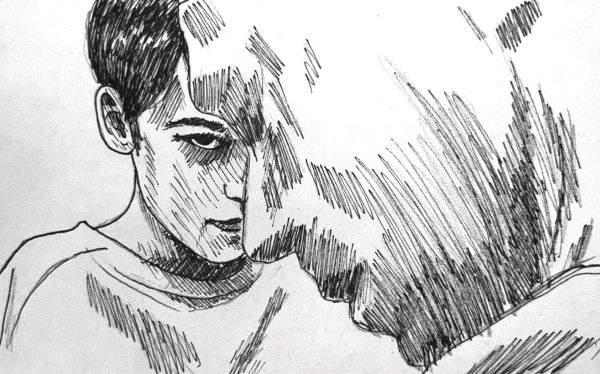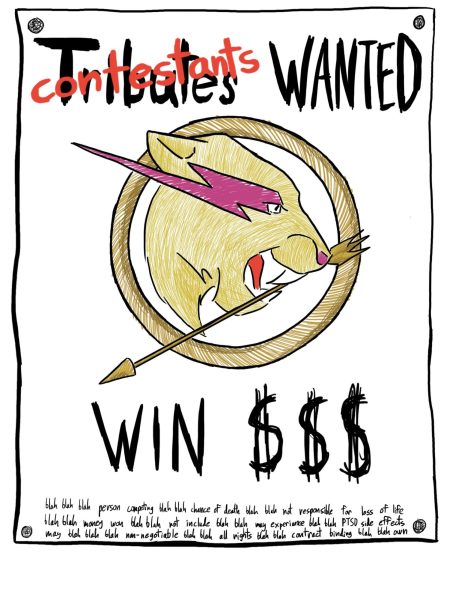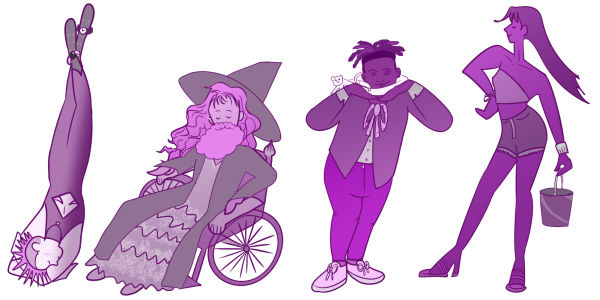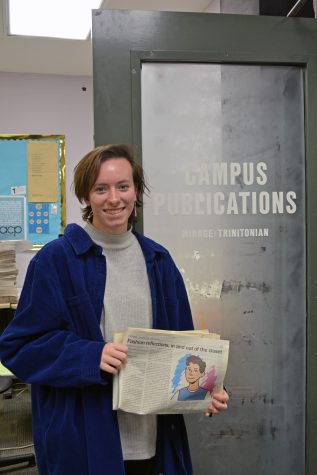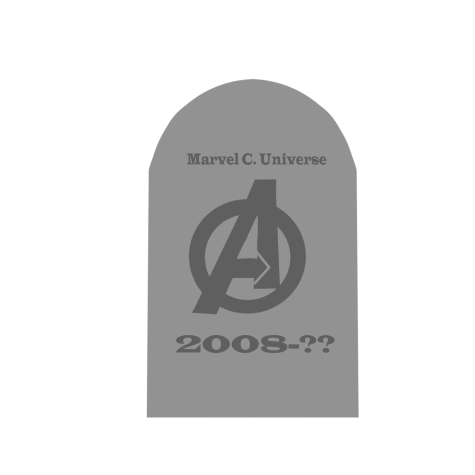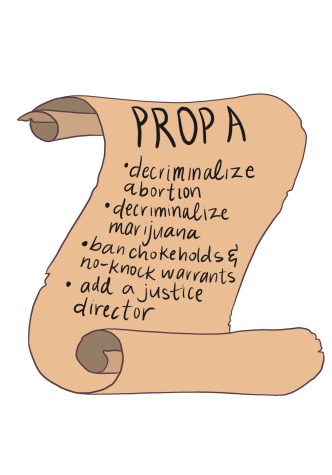OPINION: “Euphoria,” surrealism and the ever-present high school drama
If it hadn’t already, HBO’s “Euphoria” undeniably ascended to cultural phenomenon status this season, reportedly having 6.6 million viewers across platforms on finale night. Each week, Twitter spotlighted floods of reactions to each episode. Memes range from gaudy outfits captioned “on my way to Euphoria High,” to comically asking where the teachers are, or what clandestine operations provide Lexi’s bottomless theater budget. While Euphoria High actually has a name, East Highland, audiences are referencing the breakdown of realism.
The first season of “Euphoria,” in 2019, asserts its autonomy visually. Deep, dizzying cool colors characterized the glittery first season’s lauded cinematography. The shift from blue and purple tones to warm golds (now shot entirely on film!) didn’t make it any less dreamlike. Director Sam Levinson said, “If season one was a house party at 2 a.m., season two should feel like 5 a.m., way past the point at which everyone should have gone home.” Cinematographer Marcell Rév says the shift was meant to evoke a memory of high school. (This effect really shines in episode three, when we visit Cal Jacob’s backstory and see him and Derek bathed in the same golden glow characterizing teen romance in 2019.)
The visuals guide a narrative woven in between memories, dreams, fantasies and nightmares, blurred together further than ever. The last two episodes caused some confusion, from Nate’s sex nightmare of shifting faces to the seamless transitions between the “real” characters and the facsimiles of Lexi’s play. Unaddressed are the scenes just days prior of Rue running from the police with several thousand dollars of stolen jewelry and several potentially lethal car wrecks in her wake, leaving ambiguous what is hyperbolic imagery versus consequential events. Similarly, did Cassie “actually” dress up as Maddy and Jules? More likely, it’s a visual gag meant to highlight her abysmal self-respect and placeholder status in Nate’s eyes.
The season is strongest when it leans into this character-centric surrealism and becomes more enjoyable as a character study. More credulous viewers still fixate on the identity of Kat’s black screen, whether Rue will be kidnapped by Laurie, etc., but those points are fascinatingly trivial. Emotions drive the aptly-named “Euphoria.” Some of the best scenes are the least “eventful”: Cassie’s heartbroken, drunken swaying interpolated with Cal’s nostalgic bar dance; Rue’s tearful embrace of her dead father in an opioid-daydream church; Lexi’s theatrical interpretations of her childhood.
The season is weak where stakes are unclear, character rationales go unexplained, or screen time is questionably divided. Regression underlies the “after the party” season spirit, but the success between arcs varies. Rue, played masterfully as always by Zendaya, spirals all season until the critically acclaimed fifth episode intervention. Her wild oscillations between violent, abusive rage and scared child whimpering are gut-wrenching. But Rue’s sudden recovery at a school play feels inconclusive, especially when one of the best scenes prior was Ali validating Gia’s trauma and distrust.
Meanwhile, Cassie becomes a foil to Rue. The initial hookup with Nate was contrived, but Sydney Sweeney’s incredible performance created a compelling heel turn out of it. Cassie’s lovesick, guilt-ridden spiral into manic betrayal of everyone around her became a fascinating progression of the weak, wounded girl last season who was, even then, willing to swallow a live goldfish for a man.
Acting alone couldn’t salvage every contrivance or screen-time decision. Kat all but disappears except when she gaslights Ethan. Jules’ fantastic special episode (a must-watch) amounts to little; even if her relapsing into male validation-seeking is a plausible parallel to Rue’s drug relapse, glimpses into Jules’ thoughts and feelings are sparse. Yet Elliot, the contrived plot device, gets a four-minute song with Rue about their supposed friendship. We saw a musical number before in the season one finale, but its artistry and purpose in developing Rue’s relapse made it worth the screen time. Elliot in general feels painfully out of place for his complete lack of substance. Ironically, his whole plotline is too “high school.”
So why is “Euphoria” — and so much of TV— still set in high school? Many online have dismissed it as perverted directors, but there may be a more charitable rationale.
High school is the last near-universal social setting. With season two’s cinematographic shifts, MA rating and older cast, “Euphoria” reveals nostalgia as a primary draw. It’s not meant for teens to see themselves represented – unlike, say, “Degrassi.” In this way, there is a bit of surrealism inherent to the high school setting itself.
Season two’s deeper theme of forgiveness, repeatedly stated in Rue’s narration and in interviews with Levinson, also relates to this setting. Starting over is much more conceivable at 18, as seen in Maddy’s finally beginning to move on and look ahead. That sense of “something better comes next” is poignant across senior-year-of-high-school media, from “Ferris Bueller” to “Booksmart.”
High school, in our cultural imagination and in the world of “Euphoria,” is a time when we think we can make mistakes, be forgiven, start again. In the season one finale, we last saw most other characters at the winter formal, a lavish party with shimmering stars and streamers everywhere. Sitting with friends that she would alienate just a few months later, Cassie commented: “Maybe people are nostalgic about high school because it’s the last time they get to dream.”
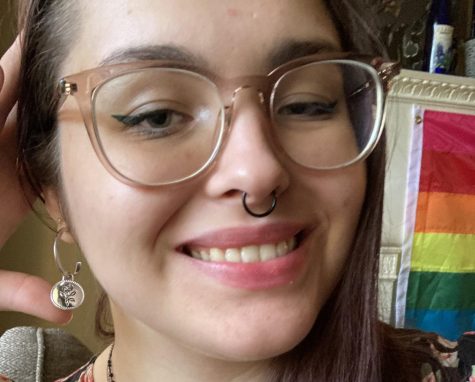
My name is Katy and I am an arts and entertainment reporter and columnist for the Trinitonian, formerly a copy editor. I am a senior graduating in December...
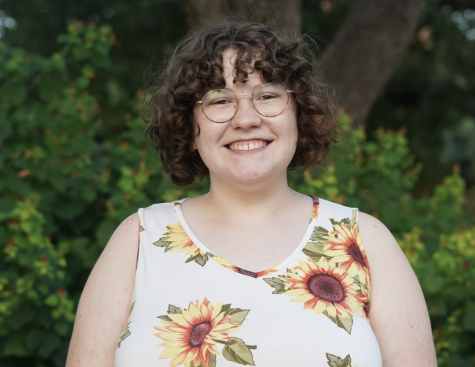
I'm a senior Computer Science major and a Classical Studies minor from Newton, North Carolina with a passion for art. I also work at the Center for Experiential...


